So you’re creating a dynamic table of contents in your document and want to format it as described in the Student Supplement for The SBL Handbook of Style.
You know you need to use styles to get the table of contents formatting to “stick.” But how?
If you’ve used heading styles, prepared an initial table of contents, and taken stock of what formatting needs adjustment, you can edit the relevant style in just 3 steps.
1. Open the “Styles” panel.
I’m assuming here that the formatting you need to change is what I’ve described.
If you need to make other adjustments, you can use the same principles described below to make those other changes too.
To start, go to the “Home” tab, and click the arrow in the lower right corner of the “Styles” section to show the styles panel.

2. Start to modify the “TOC 1” style.
Scroll in the alphabetical list of styles until you find the entry “TOC 1.”
Right click this listing, and choose “Modify….”

You’ll then see the “Modify Style” dialog box where you’ll need to make two changes.
2.1. Make “TOC 1” display in all capital letters.
First, go to “Format” (bottom left corner), and choose “Font….”
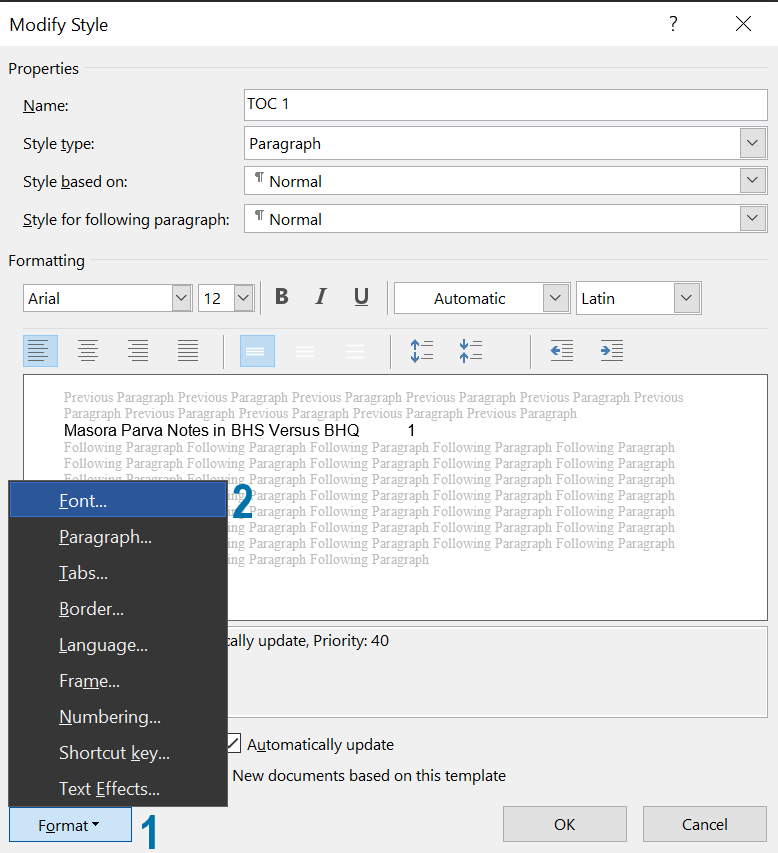
You’ll then see the “Font” dialog box.
Under “Effects” in the bottom third, find the option for “All caps,” and check this. Then click “OK.”
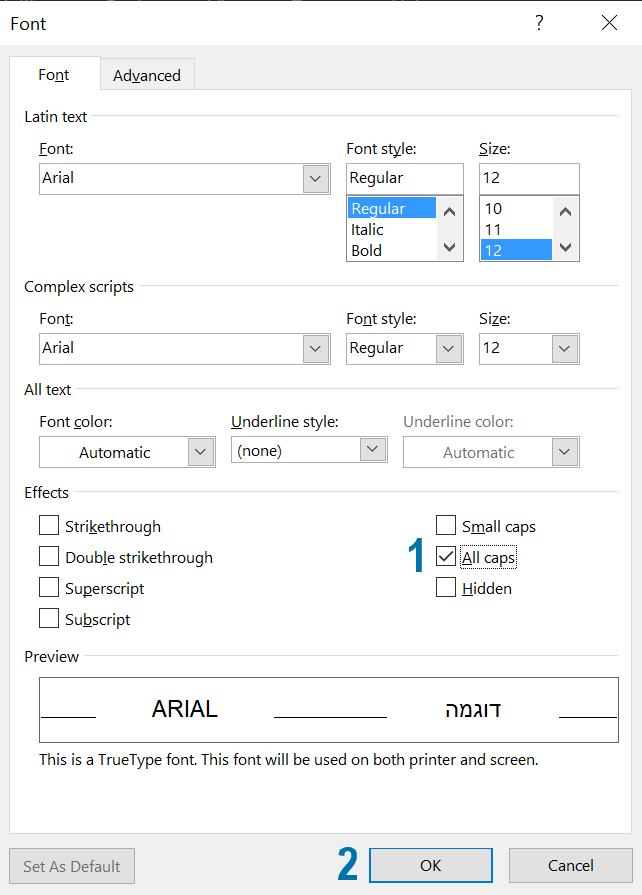
2.2. Give “TOC 1” a dotted line leader.
Then you should be back to the “Modify Style” dialog box. Here, go to “Format” again, and this time, choose “Tabs….”
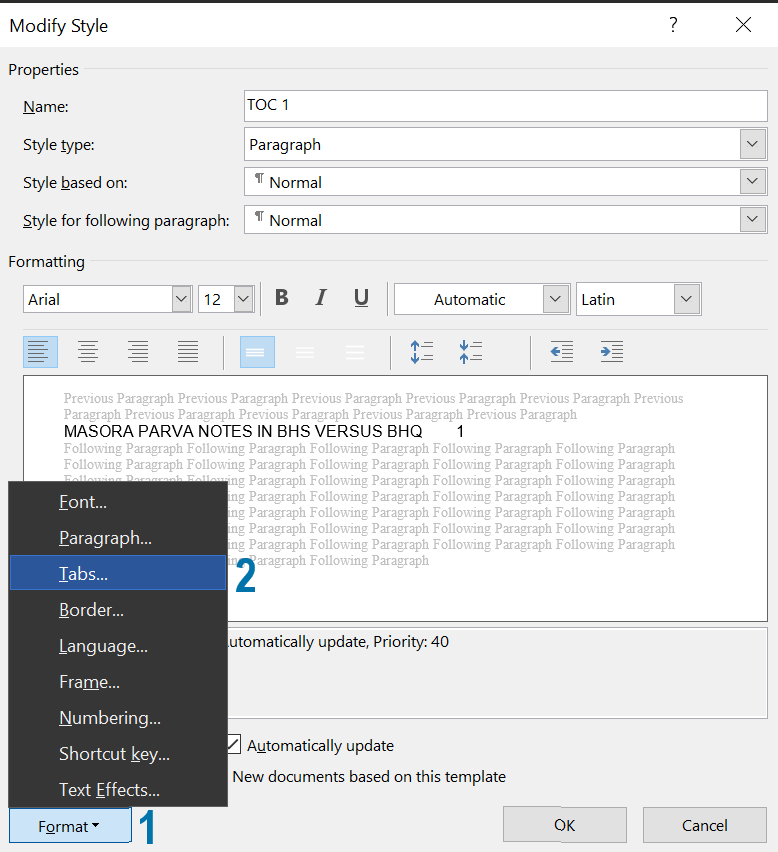
Assuming you’re using the 1-inch left and right margins that the Student Supplement specifies on 8.5-inch wide paper, enter “6.5” in the “Tab stop position” box.1
Then, under “Alignment,” choose “Right.” And under “Leader,” choose the second option for a dotted leader (……). Then click “OK.”
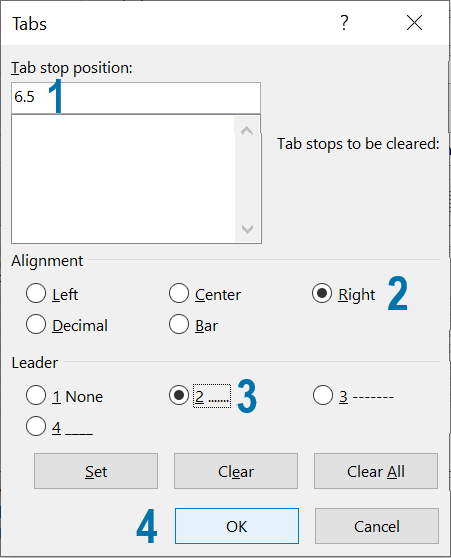
You’ll then see the “Modify Style” dialog box again.
If you need an extra blank line between each heading in your table of contents, edit this now by going to “Format.” Then choose “Paragraph…,” and change the spacing after the paragraph to 12 points. Then click “OK.” You’ll need to repeat this process on the style for each heading level in your table of contents (i.e., “TOC 2” through “TOC 9”).
Decide whether you want to use this modified TOC 1 style in other documents in the future.
If so, choose “New documents based on this template” at the very bottom of the dialog box.
If not, simply leave the default option “Only in this document” selected.
Then click “OK.”
3. Refresh your table of contents.
The font for the primary headings in the table of contents may change immediately. But to see the dotted line leaders, you’ll need to refresh the whole table.
To do so, right click inside the table, and choose “Update Field.” Then, choose the “Update entire table” option, and click “OK.”
Conclusion
Voila! You should now have a table of contents in your document that
- Follows the formatting required by the Student Supplement,
- Updates as you update your document, and
- Doesn’t need to take any more of your time with adjustments as you finalize your document.
Congratulations, and I hope you enjoy the time and attention you get to invest elsewhere now that you don’t have to manage your table of contents any more.
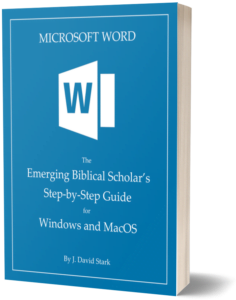
Tired of fighting with Word? Want to be done with frustrated hours fussing over how to get the formatting you need?
My new guide shows you how to bypass all of this so you can let Word work for you while you focus on your research.

For students in any graduate program, mastering the full range of available research tools is crucial for efficient and consistent productivity. Dr. Stark has mastered these tools—the most important of which is Microsoft Word…. Students eager to take their work to the next level would do well to follow Dr. Stark’s in-depth guidance.
Header image provided by Kaitlyn Baker
8.5 inches, less one inch for each margin (left and right) means that the inner edge of the right-hand margin is 6.5 inches from the inner edge of the left-hand margin. ↩

Leave a Reply